Advertisement
Latinos Are Hit Especially Hard By The Opioid Crisis In Mass. But Why?
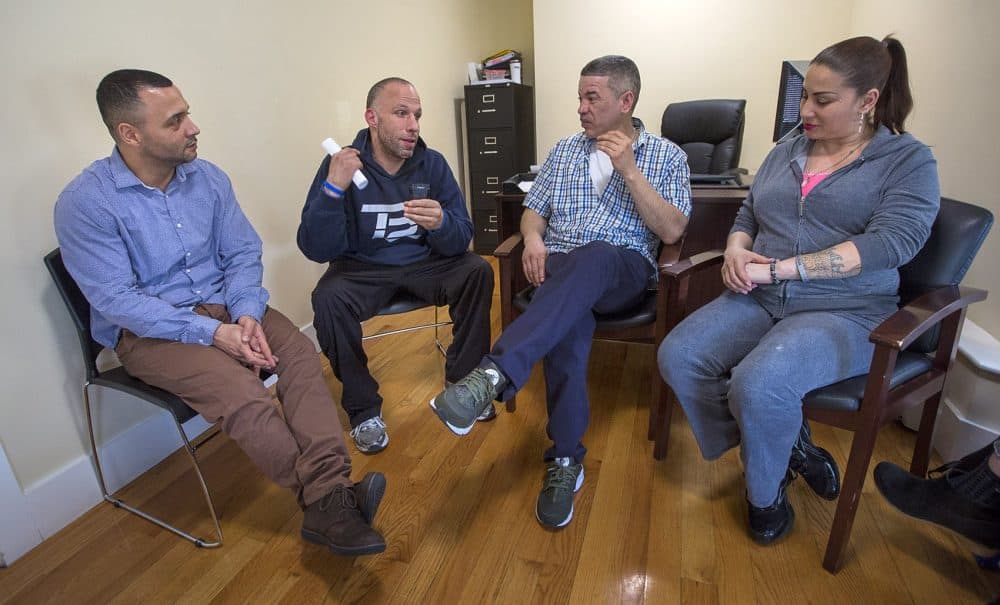
The tall, gangly man twists a cone of paper in his hands as stories from nearly 30 years of addiction pour out: the robbery that landed him in prison at 17; never getting his GED; going through the horrors of detox, maybe 40 times, including this latest, which he finished two weeks ago. He's now in a residential unit for at least 30 days.
"I'm a serious addict," says Julio Cesar Santiago, 44. "I still have dreams where I’m about to use drugs, and I have to wake up and get on my knees and pray, 'let God take this away from me,' because I don’t want to go back. I know that if I go back out there, I’m done."
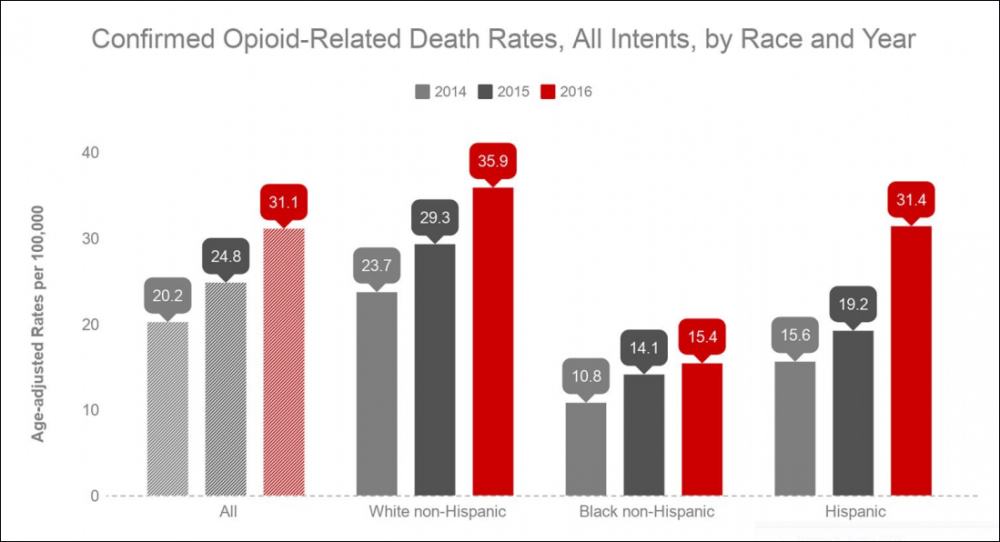
Santiago, who is Puerto Rican, has reason to worry. Near-real-time data on the opioid epidemic in Massachusetts, produced by the Baker administration, shows the overdose death rate for Latinos has doubled in three years, growing at twice the rate of any other racial group.
These numbers suggest the opioid crisis is hitting Latinos especially hard in Massachusetts. State officials say they don't know why. But interviews with current and former drug users, addiction treatment providers and physicians reveal a range of problems that put Latinos at greater risk of an overdose and death.
Few Bilingual Treatment Programs
A man in sneakers, jeans and a short-sleeved plaid shirt slaps greetings to a small group at Casa Esperanza, a collection of day treatment, residential programs and transitional housing in Boston's Roxbury neighborhood. He plops down next to Irma Bermudez, who, at 43, describes herself as a "grateful recovering addict." She's in the women's residential unit.
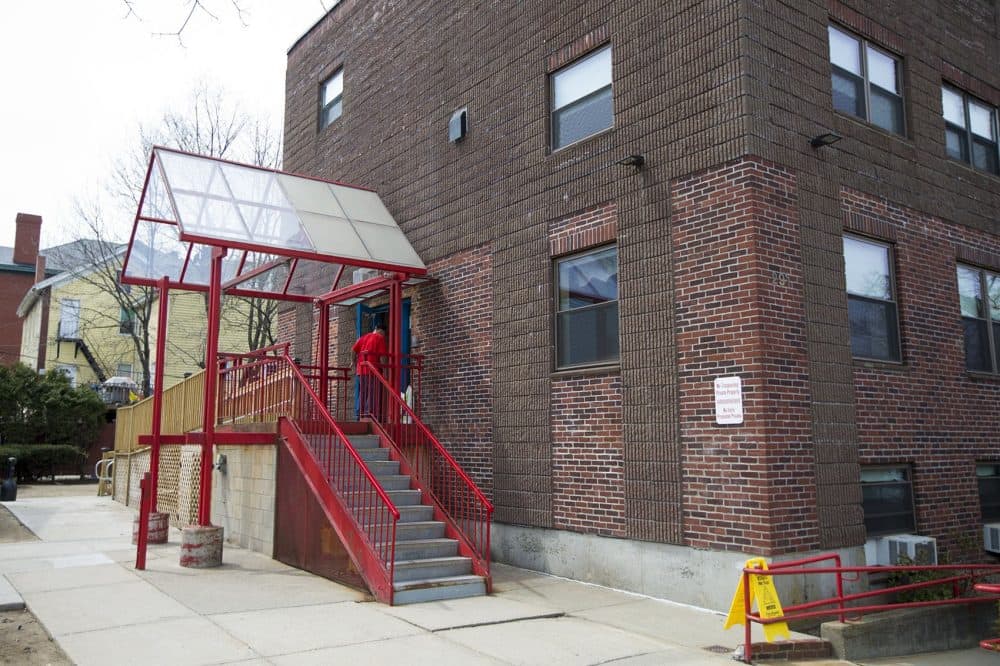
Bermudez says the high Latino overdose death rate "has a lot to do with the language barrier." It keeps anyone who can't read English well out of treatment from the start, as they try to decipher websites or brochures that advertise options. If they skip the text and call a number on the screen or walk into an office, "there’s no translation, we’re not going to get nothing out of it," Bermudez says.
Latinos interviewed for this story describe sitting through group counseling sessions, part of virtually every treatment program, and not being able to follow much, if any, of the conversation. They recall waiting for a translator to arrive for their individual appointment with a doctor or counselor and missing the session when the translator is late or doesn't show up at all.
Eleven percent of the state's estimated opioid overdose deaths last year were Latino, and yet Casa Esperanza says it has the only day and residential addiction treatment program in Boston where all the direct care staff speak Spanish.
Advertisement
There is no comprehensive list of addiction services in Massachusetts where translators are available at will. Several in Massachusetts listed as offering Spanish translation on the SAMHSA Find Treatment website could not say how many translators they have or when they are available. The SAMHSA site is only available in English, but Spanish-language translators are available by phone. The state's online help site is developing a Spanish-language version. In Boston, there are some addiction recovery programs that offer services in Spanish.
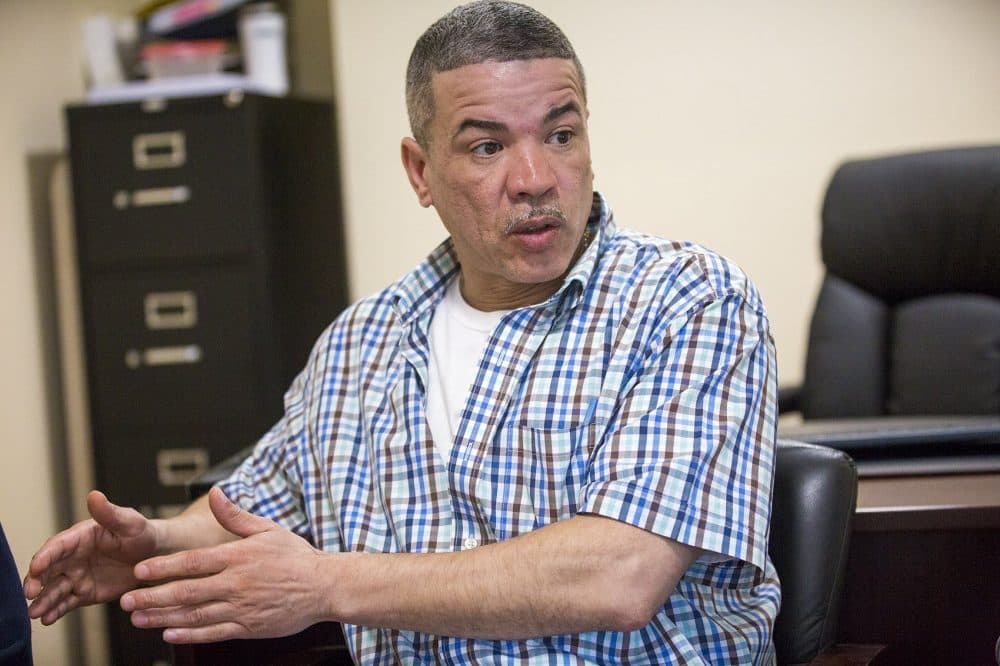
At Casa Esperanza, 100 men are waiting for a spot in the male residential program, so recovery coach Richard Lopez spends a lot time on the phone trying to get clients into a program he thinks has at least one translator.
He jabs at the air, voice rising with frustration as he role-plays a call: "You gotta press 1, you gotta press 2 and then when you get through all this voice thing, you get a voicemail."
Eventually, says Lopez, he'll get a call back during which an agent typically offers to put Lopez's client on another waiting list.
"Cheese and crackers," Lopez says, hitting the side of his head. "You’re telling me that this person has to wait two to three months? I’m trying to save this person today. What am I going to do, bring these individuals to my house and handcuff them so they don't do nothing?"
'It's Not Cool To Call 911'
Lopez has close ties these days with providers, the police and EMTs. But his attitude toward first responders, back when he was using heroin on the streets, explains another reason Latinos may be dying from a overdose more often than other drug users.
"It’s not cool to be calling 911," says Lopez about if a person sees someone overdose. "I could get shot, and I won’t call 911."
It's a machismo thing, says Lopez.
"To the men in the house, the word 'help,' sounds like degrading, you know?" he says. Calling 911 "is like you’re getting exiled from your community."
Santiago says this isn't true for everyone. A few men have called EMTs to help revive Santiago: "I wouldn't be here today if it wasn't for them."
But Santiago and others say there's growing fear among Latinos of asking anyone perceived as a government agent for help, especially if the person who needs the help is not an American citizen.
"They fear if they get involved they’re going to get deported," says Felito Diaz, 41.
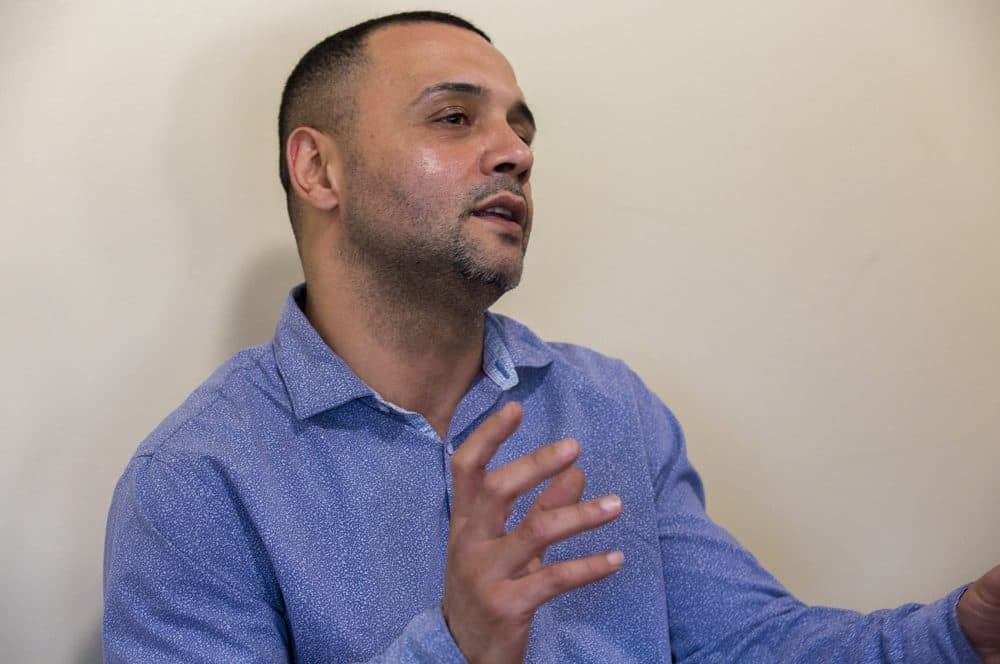
Bermudez says Latino women have their own reasons to worry about calling 911 if a boyfriend or husband has stopped breathing.
"If they are in a relationship and trying to protect someone they might hesitate as well," says Bermudez, if the man would face arrest and possible jail time.
Obstacles To Starting Over
In the last five years, 79 percent of Casa Esperanza clients have spent time in prison, often for drug possession or a drug-related crime. That makes finding a job and building a stable life when they leave treatment difficult.
"You want to start over. You want to start fresh, but you can’t do it because you have your past in your bag," Bermudez says.
Santiago says he feels stuck, as if he hasn't progressed past the high school education cut short when he went to jail at 17.
"... I still see myself doing the same things I was 30 years ago. It just feels like, how am I going to change? The only way I know how to live and cope is doing drugs."
Julio Cesar Santiago
"I'm stuck," Santiago says. "I'm 44 years old now, and I still see myself doing the same things I was 30 years ago. It just feels like, how am I going to change? The only way I know how to live and cope is doing drugs."
Some Casa Esperanza graduates find work in addiction treatment. Diaz cycled in and out of drug court twice, which he says "did wonders for me," before finding this program. Now, he runs the men's residential unit.
"I'm shocked," says Diaz, "a drug addict for 23 years, left alone with keys, in charge of 30 individuals. Who would have thought that about me?"
But many Latinos are not finding the same success.
"The stigma is so hard," says Lopez. "The only thing that’s available is a damn dishwasher or working in a damn kitchen; are you serious?"
"Or going back to what you know," says Bermudez.
For some, that means using, and sometimes dealing drugs. Which raises another reason some Latino drug users say they are hit especially hard by this epidemic: an inside track to cheap, readily available drugs.
The Internal Trade
The Drug Enforcement Agency (DEA) says many high-level distributors in Massachusetts are Dominican and often collaborate with Mexican, Colombian and Puerto Rican drug dealers.
"Dominican TCOs [Transnational Criminal Organizations] pose a significant threat to the domestic drug trafficking landscape in mainly the East Coast of the United States, with their strongest influence concentrated in areas of the Northeast located along the I-95 corridor," according to the 2017 DEA National Drug Threat Assessment.
Some drug users in Boston echo this analysis.
"The Latinos are the ones bringing in the drugs here," says Rafael, a man who uses heroin and lives on the street not far from Casa Esperanza. "The Latinos are getting their hands in it, and they're liking it."
We've agreed not to use Rafael's last name because he uses illegal drugs.
Some Spanish-speaking drug users in the Boston say they get discounts on the first, most potent cut. That social connection matters, they say.
"Of course, I would feel more comfortable selling to a Latino if I was a drug dealer than a Caucasian or any other because I know how to relate and get that money off them," says Lopez.
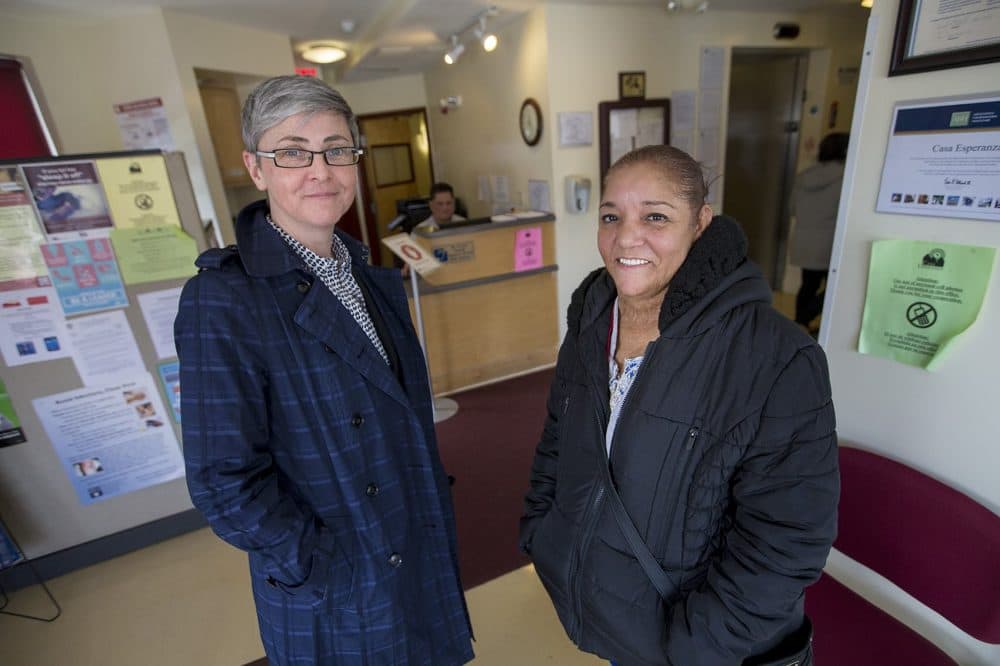
The social and occasional family networks of drug use create another layer of challenges for some Latinos, says Dr. Chinazo Cunningham, who treats many patients from Puerto Rico. She primarily works at a South Bronx clinic affiliated with the Montefiore Medical Center.
"The family is such an important unit, it's difficult if there is substance use within the family for people to stop using opioids," Cunningham says.
Cunningham says the opioid epidemic has been in the Latino community for decades and is one reason for the group's high incarceration rate. In Massachusetts, Latinos are sentenced to prison at five times the rate of whites.
"It's great that we're now talking about it because the opioid epidemic is affecting other populations," Cunningham says. "It's a little bit bittersweet that this hasn't been addressed years before, but it's good that we're talking about treatment rather than incarceration, and that this is a medical illness rather than a moral shortcoming."
The Underlying Risk Factor: Poverty
Latinos are hardly a uniform community, but they share an important risk factor for addiction: poverty. In Massachusetts, four times as many Latinos live below the poverty line as do whites. Ninety-seven percent of Casa Esperanza clients were recently homeless. The agency has 37 units for individuals and families. The wait for one of these apartments ranges from one to 10 years.
"If you’ve done all the work of getting somebody stabilized and then they leave and don’t have a stable place to go, you’re right back where you started," says Casa Esperanza Executive Director Emily Stewart.
"If you’ve done all the work of getting somebody stabilized and then they leave and don’t have a stable place to go, you’re right back where you started."
Emily Stewart, executive director of Casa Esperanza
Stewart praises the Baker administration for diving into the data that shows higher overdose death rates for Latinos. The state has some information online, in Spanish. Department of Public Health Commissioner Monica Bharel is scheduled to visit Casa Esperanza and meet with other Latino addiction treatment providers later this month.
The next step, Stewart says, has to be a public information campaign via Spanish-language media that explains treatment options, including medication-assisted treatment or MAT, which she says it not well understood.
Some research shows Latinos are less likely to have access to or use the opioid-based medicines, methadone and buprenorphine, than other drug users. One study shows that may be shifting. But Latinos say, access to buprenorphine, brand name Suboxone, is limited in Massachusetts because there are few Spanish-speaking doctors who prescribe it.
This article was originally published on May 03, 2018.
This segment aired on May 3, 2018.
